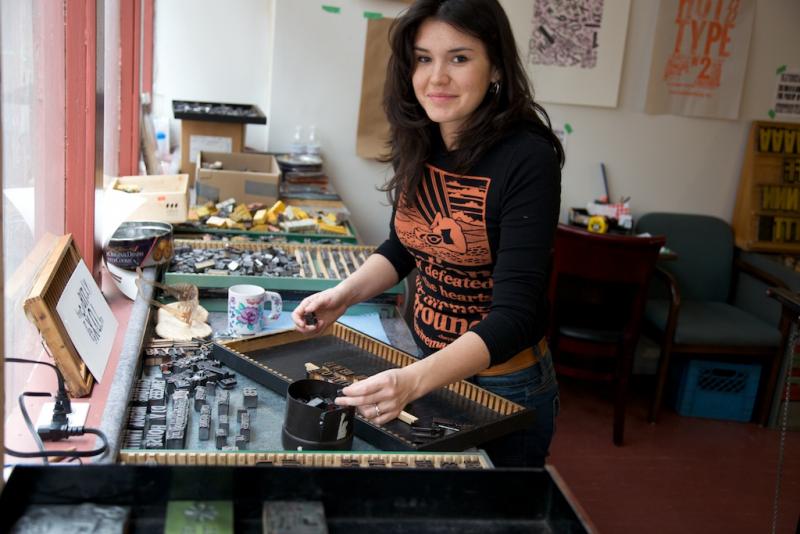In this interview, Lindsay Glauser Kwan talked to artist Marika Echachis Swan (Tla-o-qui-aht Nation) about making art, the healing nature of creativity, and the cover of issue 37.4 Claiming Space.
In this interview, Lindsay Glauser Kwan talked to artist Marika Echachis Swan (Tla-o-qui-aht Nation) about making art, the healing nature of creativity, and the cover of issue 37.4 Claiming Space.
ROOM: I read that both your parents are artists. Your mother Paula Swan is a painter and photographer and your father Joe David is a master carver and painter. Was creating art always a part of your life?
MS: Art and the inspiration to make art is a way of life for both of my parents. They will light up when they are creating something juicy. We know that when one of us is not working on any creative projects “something is up”. In the same light when something amazing happens in our lives we wonder “what are they going to make now?” In this way, they have taught me this creative language to release and celebrate my experiences. I have walked down many roads in my life and enjoy exploring the world around me but I always come home to art.
ROOM: Your work The Side Dancer’s Gift is going to be featured on the cover of our 37.4 Claiming Space issue. What does claiming space mean to you?
My father spent a lot of time studying spiritually with the Lakota people. They have a prophecy that in the near future there will be a time when women must step forward and take leadership. He tells me that men have done the best that they can but they have taken us into unbalanced place. Women must steer us back into balance.
Native communities in Canada have been deeply affected by the sexism forced on them through religious oppression and residential schools so honouring women as leaders is not always a popular idea. I am lucky that I have a supportive family that has never confined me to a ‘women’s role’. It may not be easy for some men to give up the power and control so it is up to us women to be brave in claiming our visions for the future and doing the work we know needs to be done whether or not this is viewed as a popular idea by the patriarchy.
 ROOM: What inspired the cover art? Where do you find inspiration for your art practice in general?
ROOM: What inspired the cover art? Where do you find inspiration for your art practice in general?
MS: I am a very emotional and passionate woman so I am often overwhelmed by the impact of experiences in my life. I am in awe of humanity in all its ridiculousness and also our ability to reach beyond these flaws.I am deeply affected by the wild nature of the land I come from. I use my creativity to reflect these experiences and to celebrate them. Sometimes my work is very dark (I don’t often share these publicly) and sometimes it is hopeful depending on the context.
Four years ago I moved back home to my traditional territory and started learning our dances. During our our most powerful headdress dances women line all sides of the dance floor protecting what is taking place in the center. This is a portrait of a side dancer that has mentored me. Women often play humble, seemingly supporting roles traditionally but we shouldn’t downplay the importance of this. The western mind frame has taught us to view the prominent male with the most decorative garb as the most powerful position but there are many examples in our cultural heritage where everyone must work together in unity and each role is in balance just as important as any other.
ROOM: The Side Dancer’s Gift is a lino print and graphic design. What other mediums do you work in?
MS: I enjoy many mediums, really anything that I can get in my hands on and build some momentum around and I’m off running. My dad taught me some simple beading stitches when I was four. Within a few years I had a little humble table at the local market with all my own original beaded designs. I enjoy detailed work and find peace on long winter nights slowly working away on projects. I have explored carving, painting, sewing, crocheting, weaving, beadwork, writing … but mostly recently I have been doing relief printmaking.
ROOM: I heard in an interview that you believe in the healing power of expression. How did you come to this belief?
MS: For several years I worked with Redwire Native Youth Media Society based out of east Vancouver. We were working as a collective to create space for young Native voices. We published a quarterly magazine as well for many years where we honoured the uncensored stories and artwork of Native youth across Canada. Creating this free space allowed our young people to unburden a lot of what they were carrying in their hearts and see how their stories were of value to their peers.
For myself, having the means to release my emotions, frustrations, hopes and dreams allows me to reflect on and explore my journey. This is a very cathartic and empowering experience for me. Sharing and showing my work allows me to connect with the larger community and validate that I am not alone in the humanity of my experiences.














